The Exit 8
Horror delivered with exacting efficiency
PC, Steam Deck
$3.99
1-2 hours
The Exit 8 is a spot the difference horror game set in a Japanese subway corridor. Sometimes the corridor looks like a normal subway corridor, and sometimes it contains “anomalies” like a missing door or different floor tiles or a monster that leaps out at you. To exit the subway, you need to spot if there are any anomalies, eight times in a row.
Now, liminal spaces and backrooms may be hot with the kids, but setting a game in them doesn’t automatically make it good or scary. What’s special about The Exit 8 is how it achieves maximum tension through unbelievably streamlined design.
This is in effect from the very first second. When you start the game, there are no company logos, no “Powered by Unreal” badge, no menu to change controls or view credits; you start the game and you’re immediately standing in a subway corridor. It’s deeply disconcerting, like when you take a step and the ground isn’t where you were expecting. It’s such a small thing to do and not really advisable for most games, but it sets the tone perfectly.
The corridor has white tiles lit by harsh fluorescent strips in the ceiling. A man walks past you, carrying a briefcase. There are posters on one side, advertising a dog salon and a photo exhibition; opposite them are locked doors. A hum emanates through the space, with a quiet clicking sound that comes so infrequently it’s always a mild shock when you hear it. It’s rendered with near-photorealistic fidelity, which intensifies both the monotony and the terror.
Not only does The Exit 8 have the coldest of opens, but it has zero story and makes zero effort to explain itself. Here’s what happened in my first few minutes: I walked down the corridor, following it left, right, then left again, and arrived at exactly the same corridor with the same man rounding the corner. Turning around just took me to the same corridor, as if space were warping around me. This time I followed the man, keeping him in my sight; he stopped at an exit sign to look at his phone; when I walked round a corner and back again, he vanished.
It’s very weird, but also weirdly boring. There are no smears of blood or post-it notes declaring the end is nigh. I ran around the corridors a few times until I noticed a new sign had appeared:
Don’t overlook any anomalies
If you find anomalies, turn back immediately
If you don’t find anomalies, do not turn back
To go out from Exit 8
In practice, this means you enter the main corridor and see if anything looks different. If there’s nothing different, you go to the end and keep walking. If there is something different, like there are two men standing in the corridor instead of one, or there’s a stain on the ceiling, you turn back the way you came. If you’re correct that there was nothing, or there was something, the number on the yellow exit sign increases from Exit 0 to Exit 1. But if you’re wrong and you missed a difference, it resets to Exit 0. That’s it!
I’ve deliberately underplayed the scariness of some of the “anomalies” because The Exit 8 is, for the most part, not filled with jump scares. Most of the differences in the corridor are subtle and easily missed, like this stain on the ceiling:
or a doorknob appearing in the centre of a door:
But once in a while, something deeply unnerving happens. Early on, I rounded the corner to see the man walking towards me far faster than any human should; I got the hell out of there. Later, I noticed the eyes on a poster were moving. Another time, I was studying the posters when I had the vague sense something was wrong; I looked up and saw the fluorescent lights were all askew:
And then there are the rare jump scares. These happen just often enough to keep you on edge every time you turn the corner. Once, I was most of the way down the corridor when I heard a noise, like a loud fan. I turned to look at the vent in the wall, which seemed normal, then looked back to see a wave of red water surging down the corridor. I walked, then ran backwards as fast as I could.
Then there’s the time I died. I spotted the anomaly immediately as I turned into the corridor: there was the outline of a man on the far wall. I could’ve left right then, like a sensible person, but instead I decided to get closer to see what it was. When I was just a few metres away, the man, who was covered in wall tiles, sprung out and throttled me; the screen went black and I woke up right at the start. So when I later encountered an anomaly where the lights flickered off and I only had a small torch to see with, I could only imagine what terrors might be in store for me.
Recounting these anomalies is like telling scary stories around a fire: “this one time…” What’s impressive about The Exit 8 is how efficiently it delivers those stories. Other games, burdened with dialogue and story and world-building, space out those stories across minutes and hours, but in this subway, every time you turn the corner you’re setting yourself up for a scare. It might not happen – sometimes you can go around a few times without seeing anything weird – but that only heightens anticipation and forces you to pay more attention.
It only took me 30 minutes to decide correctly eight times in a row and reach Exit 8. When this happens, the corridor is swapped out with stairs and you’re greeted with sounds of the city and nature; the screen goes white and we roll credits. Then you’re back in the corridor again, except there’s a new sign:
Thank you for using the underground passageway. We apologise for any inconvenience this may cause you, There are 26 of anomalies that have not been found. We appreciate your understand and cooperation.
The number ticks down as you keeping playing and spotting more differences. It’s nicely subtle scorekeeping that reassures you there’s more to see over the next couple of hours. Even better, anomalies aren’t repeated, so there’s little wasted time.
The designers’ restraint is impressive – another game might have been all jump scares, but it’s the wonky ceiling lights that will stick with me for their economy of terror. It’s trivial for designers to speed up a walking animation or change the image on a poster or move around lights in a scene, but if executed well, the effect it has on players is profound – who would do such a thing?!
Lately, critics have become jaded to graphical fidelity, correctly seeing it as a replacement for good gameplay, but The Exit 8’s photorealism is essential to its success, as the architecture and surfaces and lighting are so close to reality that any departure from its perfect cleanliness and straight lines seems even scarier. As a side note, I was astonished how good this looked on my Steam Deck OLED, though it did chew through the battery at a ferocious pace.
Then there’s the whole liminality and “backrooms” of it all. Much has been written about how they represent the repetitiveness and loneliness of city life, their familiarity and unsettling nature making them perfect vessels for modern-day fables and SCP Wiki stories. The Exit 8 nails this vibe with consummate ease, its bland official signage far more subtle than Scarfolk’s one-note horror, its experience more compact even than the other space-warping corridor-based horror game that surely inspired it, P.T.
All of that deserves praise, but it overlooks how, amid an age of active shooter drills and situational awareness training for sightline and exits, The Exit 8 has reinvented “spot the difference” for 3D horror games. This is more than a cheap thrill – it’s a jewel of game design.



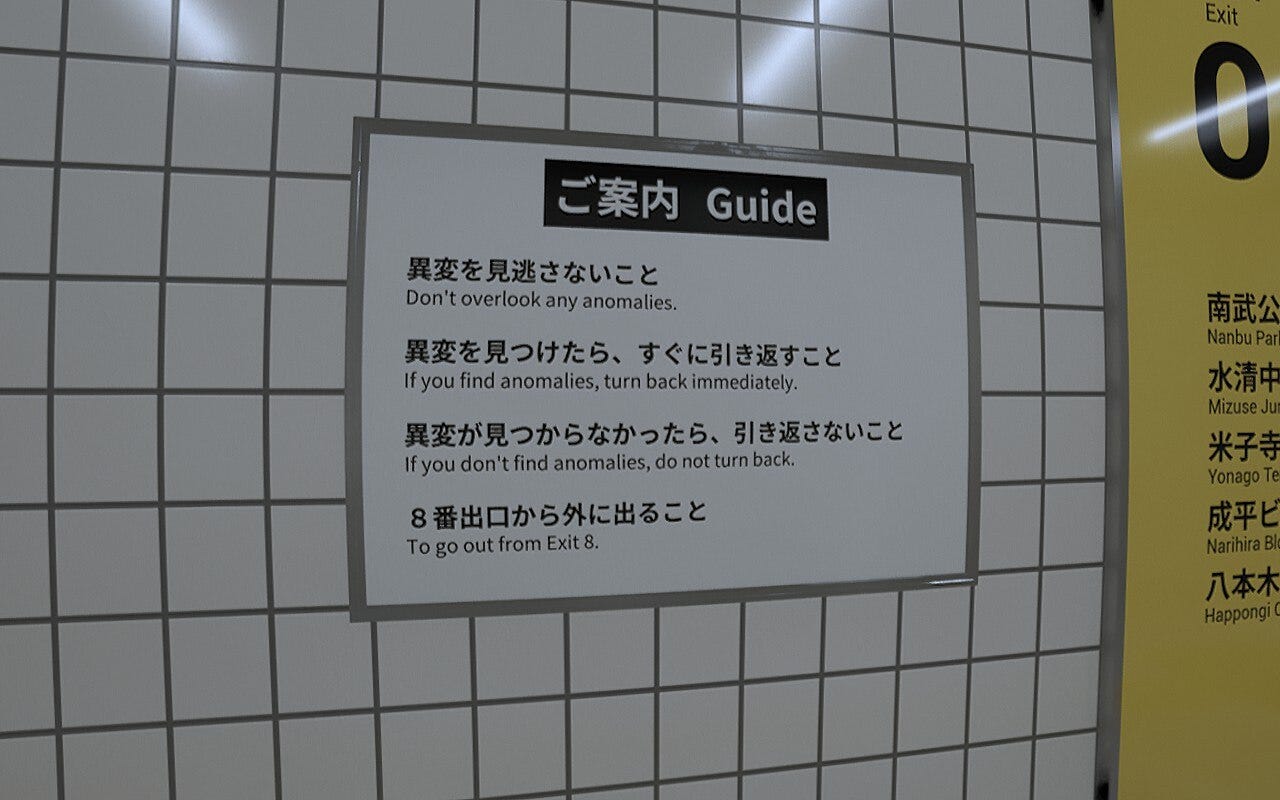

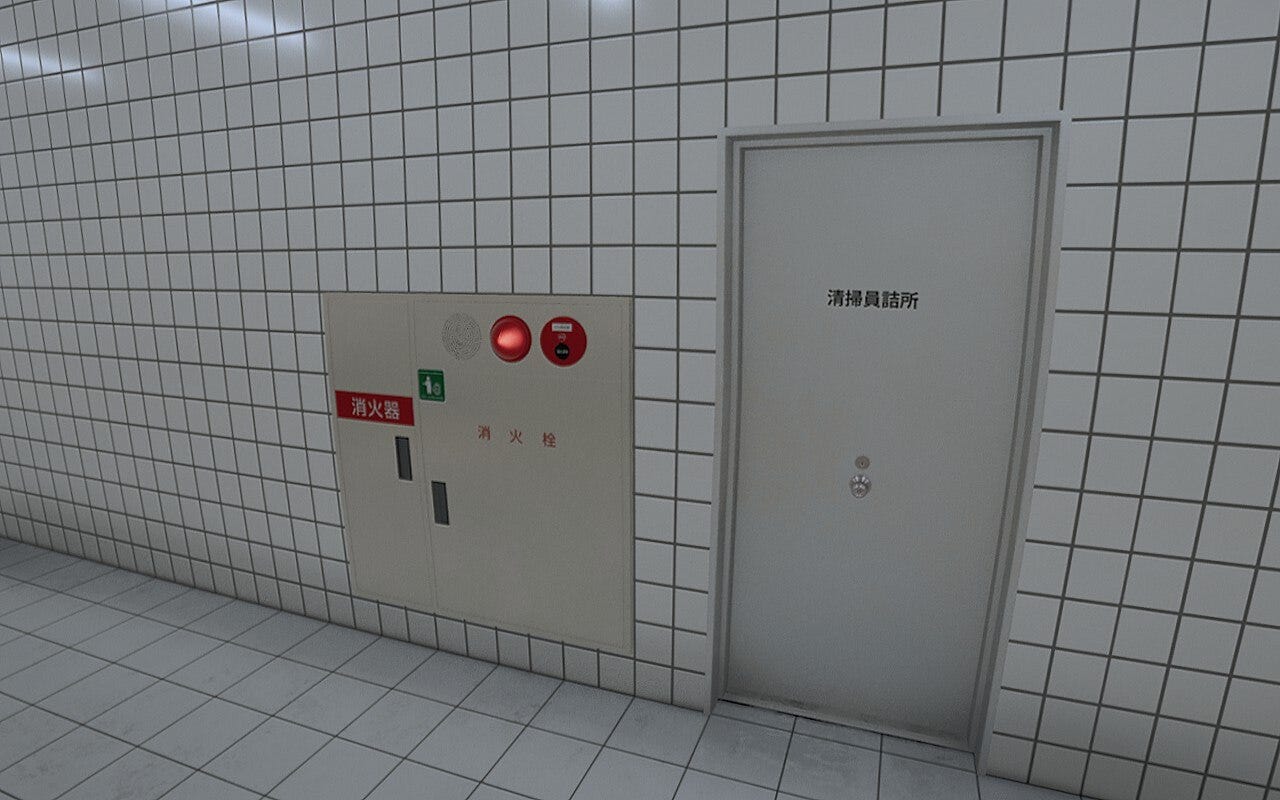

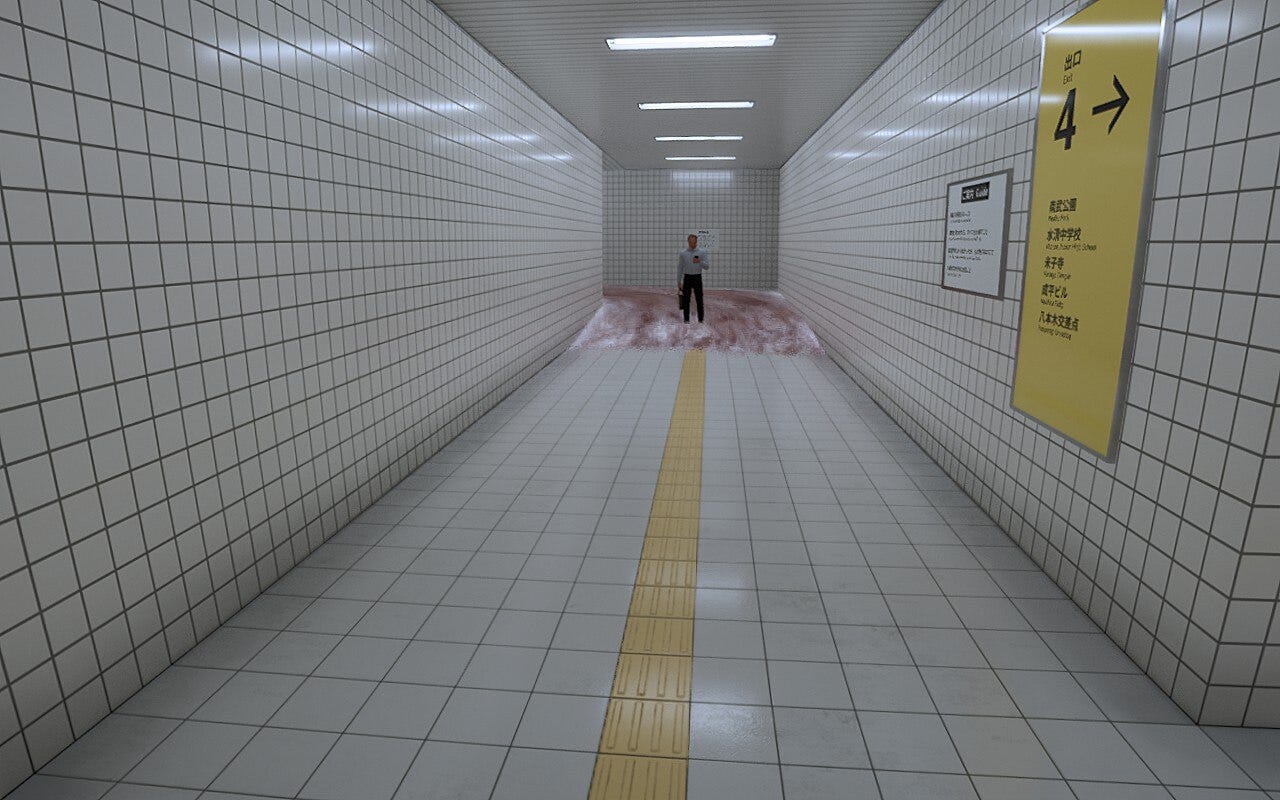

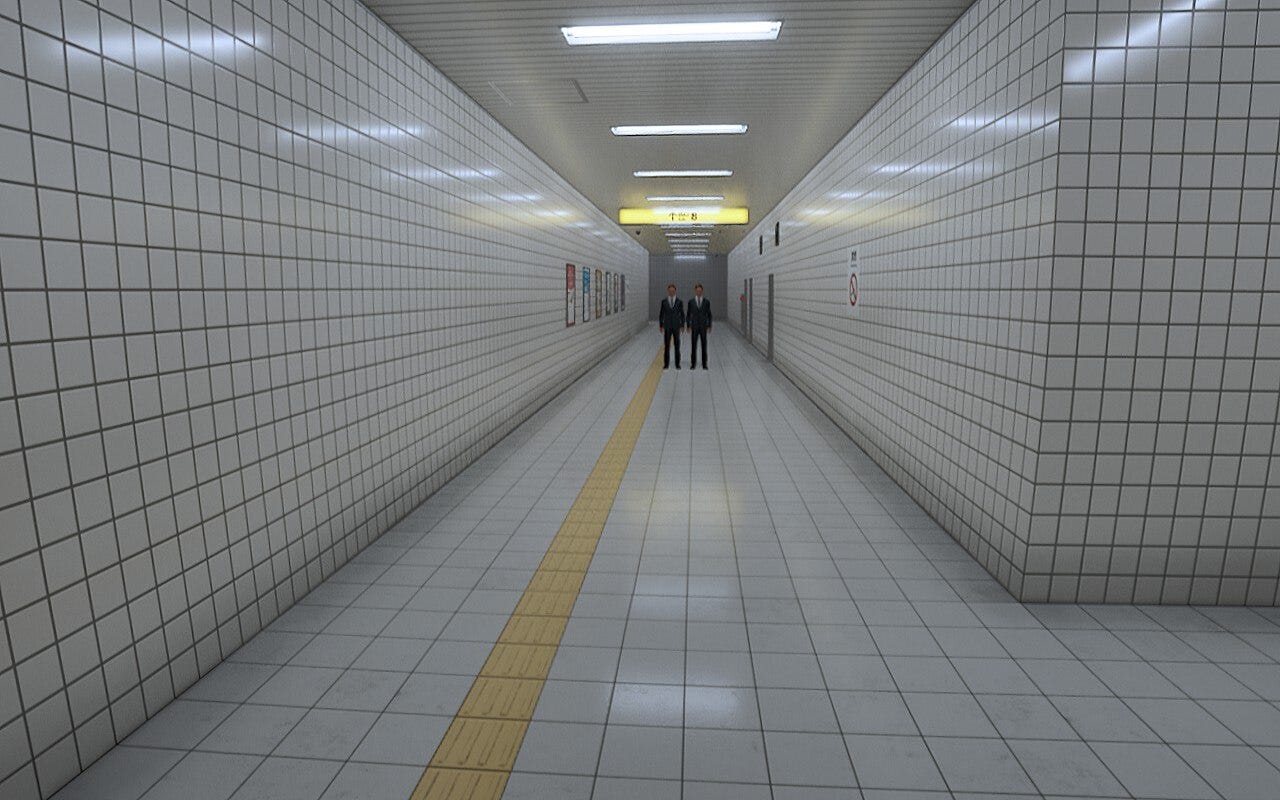
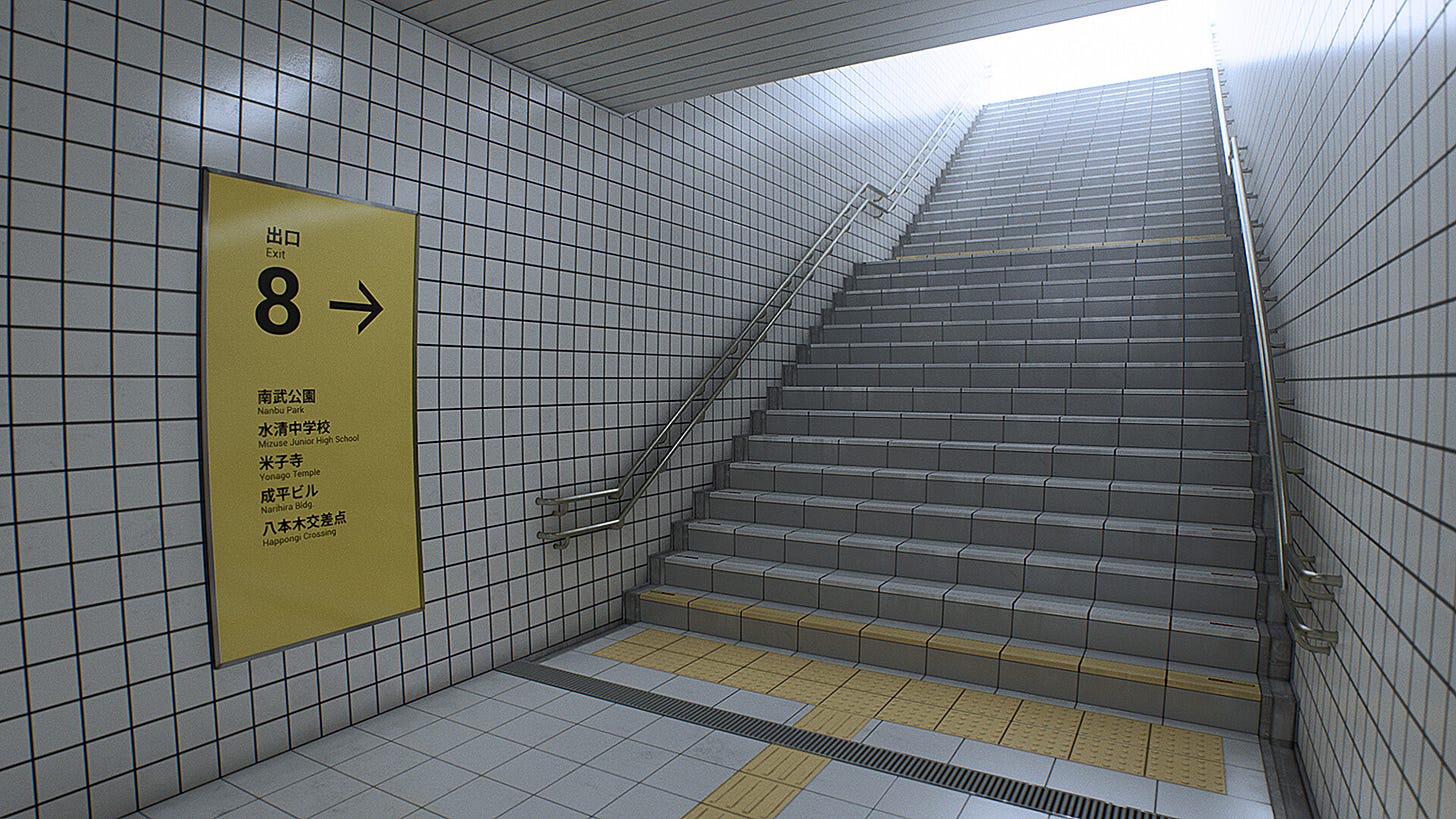
Wow, definitly keen to try this. You should try 'Let's Find Larry' next!
This sounds fantastic.